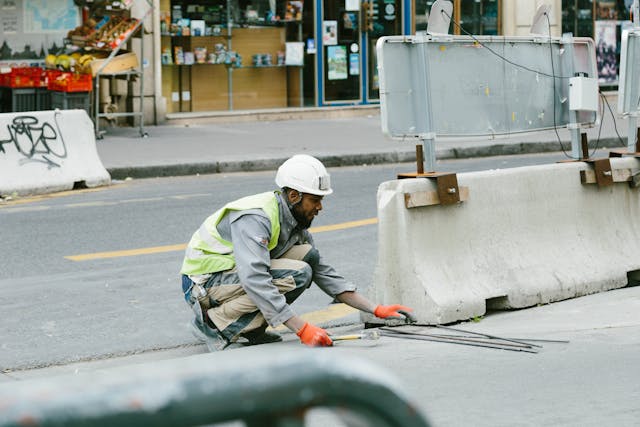
New York City is preparing to transform one of its most recognizable urban elements: the green-and-plywood sidewalk shed. Long seen as a necessary but dark and cumbersome presence, scaffolding has shaped how millions move through the city. Now, under the city’s ambitious “Get Sheds Down” initiative, six new systems are being introduced to make construction sites safer, brighter, and less intrusive to daily street life.
The effort aims to replace bulky structures with lightweight, modular systems that feel more like transparent extensions of the street rather than temporary obstacles. For decades, the traditional pipe-and-plywood design has dimmed sidewalks, narrowed entryways, and changed how people see storefronts. The new designs propose a shift toward clarity, daylight, and flexible spatial conditions, opening views and letting sunlight reach the pavement.

These upgraded scaffolding systems — developed by engineering firm Arup and Practice for Architecture and Urbanism (PAU) — are built around modular components that adapt to irregular building edges, street furniture, and tight curb conditions. Their geometry allows building owners to scale them up or down, while lighter frames reduce visual clutter and avoid the sense of compression that often affects pedestrians during long-term construction.
Arup introduces three solutions tailored to distinct construction needs:

PAU approaches the same urban challenge with a complementary trio:
A unifying principle behind PAU’s systems is the integration of angled roofs with calibrated perforations, which direct natural light down to street level and reduce the dark, claustrophobic conditions associated with traditional scaffolding. PAU founder Vishaan Chakrabarti highlighted just how significant the upgrade will be, pointing to the vast scale of existing coverage. He noted that more than 400 miles of scaffolding currently covers New York’s sidewalks.
Together, these six systems point to a future where construction no longer means masking a building behind dim corridors. Instead, New York’s sidewalks may soon allow pedestrians to pass through safe, active, and daylight-filled pathways. The redesign signals a change in how the city views public space — not merely as something to navigate around construction but as a vital part of everyday urban experience worth enhancing even in its most temporary form.
Architecture: Arup, Practice for Architecture and Urbanism (PAU)
Location: New York, NY
Initiative: Get Sheds Down
Originally reported by Design Boom.